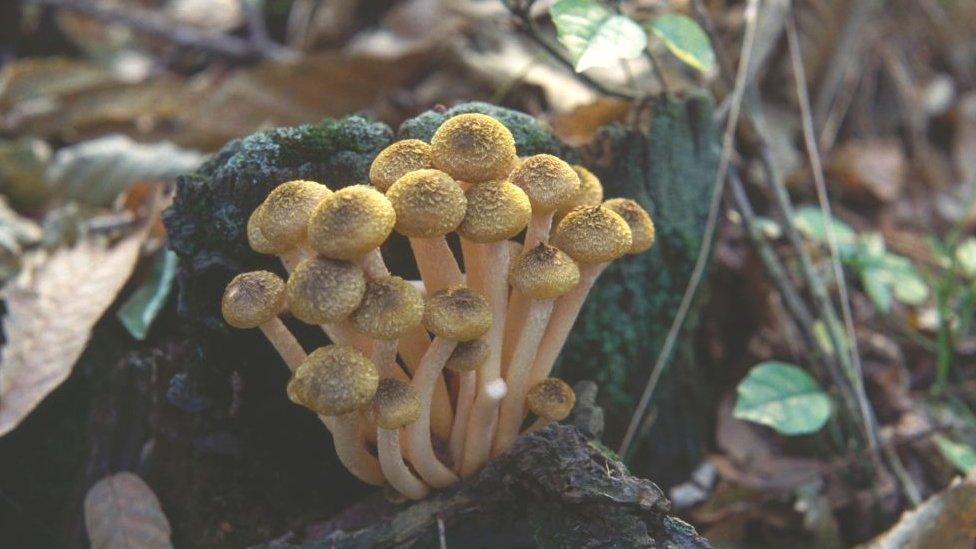Honey fungus secrets fall to science
- Published

Honey fungus: A plant pathogen found around the world
Citizen scientists have helped shed light on a "humungous fungus" that can kill off common plants.
The honey fungus often appears at the start of autumn, when honey-coloured toadstools appear on woody plants.
Plant pathologists compared more than 5,000 records of confirmed cases with a previous study into susceptibility by the University of California.
They found plants in UK gardens fall into three categories, based on their risk of the disease.
Plants in the Myrtales order of flowering plants - including myrtle and fuchsia - and Ericales - including camellia and heather - tended to have low susceptibility, while those in the Saxifragales - such as liquidambar and witch hazels - and Fagales - birch and sweet chestnut - were mostly highly susceptible. A third group of plants were in the middle, including maple, magnolia and rose.
Senior plant pathologist at the Royal Horticultural Society (RHS), Matthew Comey, said a database compiled from a large number of confirmed samples supplied by gardeners was behind the findings.
"The RHS has long advised on what plants might be best avoided if honey fungus is a known problem on your plot but this new research, for the first time, also accounts for a plant's popularity in gardens and therefore the diseases' likely true impact," he said.
"Following the planting advice isn't a guarantee against the disease but a sensible precautionary measure akin to practicing good plant hygiene."
Honey fungus has been made worse in recent years by warm, dry summers, which make plants more susceptible to attack.
The fungus colonises and kills a variety of trees and woody plants and once present in a garden can be managed but not eradicated.
The yellow-brown mushrooms that appear above ground are the fruiting bodies of much larger organisms, which can spread large distances underground.
A specific honey fungus measuring 2.4 miles (3.8 km) across in the Blue Mountains in Oregon is claimed to be the largest living organism on Earth.
"The honey fungus is part of the recycling of plants," said Matthew Comey. "The dead and dying, the weak, the sick plants, these are the ones that tend to succumb in a forest - and really it's an equilibrium, it's a balance.
"If people can try and grow plants naturally so they're comfortable with where they are - they're in the right environment, they're in the right place, everything else is good for them, then they're much less likely to succumb."